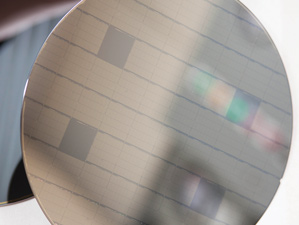
‘Electroadhesive’ Technique from MIT Could Help Build Tinier Electronics
October 28, 2019
Our lives are consumed by small electronics, like smartphones and smartwatches, from which we demand ever more power. The most intricate components of these dev Read more…

MIT Researchers Build Carbon Nanotube Microprocessor
September 5, 2019
A years-long mission to build a microprocessor out of carbon nanotube transistors has finally succeeded thanks to a team of MIT researchers. The development comes as the sustainability of Moore’s Law is increasingly called into question. Silicon-based transistors are nearing the point when they will be unable to shrink anymore, delivering increasingly marginal improvements. Read more…

IBM Reports Carbon Nanotube Transistor Breakthrough
October 1, 2015
Perhaps Moore’s law isn’t doomed just yet. Maybe. IBM Research (NYSE: IBM) reported in a paper in Science today a technique for making carbon nanotube trans Read more…

Stanford Group Creates Four-Layer Stacked Chip
December 18, 2014
With transistor scaling slated to come up against some fundamental limits over the next five to seven years, chip designers are hot on the trail of technologies Read more…

IBM Bets on Nanotubes to Succeed Silicon in 2020
July 2, 2014
The effect of five decades of exponential progress with silicon chips doubling in speed every couple years as observed by Intel cofounder Gordon Moore in 1965 c Read more…

Carbon Nanotubes Pitched as Post-Silicon Contender
June 23, 2014
With TOP500 list stagnation likely signaling the slow-down of an exponential known as Moore's law, what better time to consider alternatives to silicon-based m Read more…

Carbon Nanotubes Aid Microprocessor Cooling
January 23, 2014
The semiconductor industry is facing several hurdles in developing the next generation of microprocessors. As more and more transistors are squeezed onto a chip Read more…

Stanford Debuts First Carbon Nanotube Computer
September 27, 2013
A new computer made of carbon nanotubes, created by a team of Stanford engineers, may be the first serious silicon challenger. Read more…

- Click Here for More Headlines

Whitepaper
Transforming Industrial and Automotive Manufacturing
In this era, expansion in digital infrastructure capacity is inevitable. Parallel to this, climate change consciousness is also rising, making sustainability a mandatory part of the organization’s functioning. As computing workloads such as AI and HPC continue to surge, so does the energy consumption, posing environmental woes. IT departments within organizations have a crucial role in combating this challenge. They can significantly drive sustainable practices by influencing newer technologies and process adoption that aid in mitigating the effects of climate change.
While buying more sustainable IT solutions is an option, partnering with IT solutions providers, such and Lenovo and Intel, who are committed to sustainability and aiding customers in executing sustainability strategies is likely to be more impactful.
Learn how Lenovo and Intel, through their partnership, are strongly positioned to address this need with their innovations driving energy efficiency and environmental stewardship.
Download Now
Sponsored by Lenovo
Whitepaper
How Direct Liquid Cooling Improves Data Center Energy Efficiency
Data centers are experiencing increasing power consumption, space constraints and cooling demands due to the unprecedented computing power required by today’s chips and servers. HVAC cooling systems consume approximately 40% of a data center’s electricity. These systems traditionally use air conditioning, air handling and fans to cool the data center facility and IT equipment, ultimately resulting in high energy consumption and high carbon emissions. Data centers are moving to direct liquid cooled (DLC) systems to improve cooling efficiency thus lowering their PUE, operating expenses (OPEX) and carbon footprint.
This paper describes how CoolIT Systems (CoolIT) meets the need for improved energy efficiency in data centers and includes case studies that show how CoolIT’s DLC solutions improve energy efficiency, increase rack density, lower OPEX, and enable sustainability programs. CoolIT is the global market and innovation leader in scalable DLC solutions for the world’s most demanding computing environments. CoolIT’s end-to-end solutions meet the rising demand in cooling and the rising demand for energy efficiency.
Download Now
Sponsored by CoolIT
Advanced Scale Career Development & Workforce Enhancement Center
Featured Advanced Scale Jobs:
HPCwire Resource Library
HPCwire Product Showcase
© 2024 HPCwire. All Rights Reserved. A Tabor Communications Publication
HPCwire is a registered trademark of Tabor Communications, Inc. Use of this site is governed by our Terms of Use and Privacy Policy.
Reproduction in whole or in part in any form or medium without express written permission of Tabor Communications, Inc. is prohibited.
























